Jean-Michel Basquiat (New York, 1960 - 1988) was an American artist, among the most important exponents of graffiti art, also associated with neo-expressionism. The level of expression and content of his graffiti was considered so high that it went from the walls of the streets of New York directly into the halls of museums, as well as for other “writers” such as Keith Haring.
Basquiat’s life was short but quite intense. He quickly rose to success, becoming a major player in New York’s vibrant art scene in the late 1970s and early 1980s, eventually collaborating with his idol Andy Warhol. But at the same time he quickly lost control over his drug use, which unfortunately proved fatal to him when he was only 27 years old. Basquiat’s works goad the viewer into reflecting on some of the dynamics that characterize contemporary society, such as capitalist hypocrisy and existentialism, and are laden with jarring figures and bright colors, painted as if they were expressions of an instinctive urge.
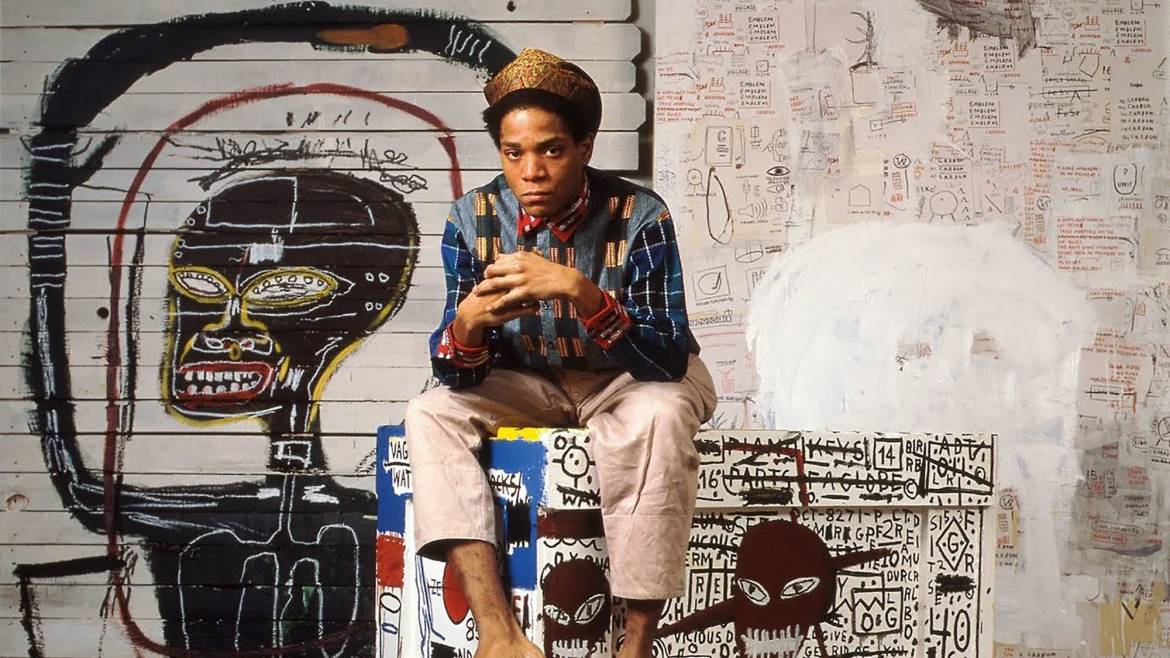
Jean-Michel Basquiat was born in New York City, specifically in the borough of Brooklyn, on December 22, 1960, into a family of mixed background. In fact, his father Gérard was born in Haiti and his mother Matilde was of Puerto Rican descent. Basquiat had two younger sisters (Lisane and Jeanine), and an older brother (Max) who, however, died shortly before he was born. It was his mother, who was passionate about art, who made it possible for Basquiat to become familiar with the most famous masterpieces by taking him to major New York museums from an early age. Basquiat was very precocious about learning to read and write and began drawing just as early, inspired in particular by the cartoons he watched on television. He was thus enrolled in an elementary school geared toward the study of the arts.
Basquiat’s adolescence was quite troubled; in fact, his parents divorced and he was placed with his father along with his sisters. His mother, on the other hand, was in and out of mental institutions, and Basquiat could not handle the emotions involved in living in such a complicated situation. When he was fifteen, he decided to run away from home after his father caught him smoking, took to sleeping on a bench, and was arrested for vagrancy. Basquiat was a very gifted and intelligent boy, but he was unable to attend school classes, so he was enrolled in the “City-as-school,” a school with alternative teaching methods more suitable for students like him. There he met and befriended Al Diaz, a graffiti artist through whom Basquiat began to become aware of his artistic abilities as a writer. Basquiat and Diaz spent much time together, drawing and using drugs extensively, and formed an artistic partnership under the pseudonym "SAMO.“ The name came from a phrase the two friends said while smoking marijuana together, noting that they were smoking ”the SAMe Old shit“ (”the same old shit"). SAMO was not just a signature but a true conceptual philosophy. The name first appeared in 1977 in a novella written by Basquiat, whose protagonist was a young man who comes across a holy man who proposes several religions for him to join. The only one that really convinces him is the SAMO religion, which is based on the principle that “we do on earth whatever we like, then trust in God’s grace with the excuse that we didn’t know,” in open opposition, therefore, to the dictates of Catholicism. Following the publication of the novella was followed by a full-fledged publicity campaign illustrated by the duo and other schoolmates.
In May 1978, the name Samo began to appear more and more widely on the walls of the Soho and Tribeca neighborhoods as a “tag,” the typical writing that writers use to sign their graffiti, accompanied by the copyright symbol. SAMO© graffiti became increasingly popular and appreciated by the public. Numerous magazines and newspapers also began to take an interest in the phenomenon and asked the mysterious author to come out of anonymity and reveal himself.
In 1978, both Basquiat and Diaz were expelled from City-as-School after engaging in some shenanigans, and following the episode Basquiat’s father kicked him out of the house. Both of them then began attending the School of Visual Arts’ circle of students, although they were unable to attend classes or be able to enroll. Among the students in question was Keith Haring, who turned out to be a fan of SAMO© and began to become friends with Basquiat after discovering that he was the one behind the tag. Basquiat and Diaz’s partnership ended in 1980 over disagreements between the two writers, caused by artistic and character differences. After the duo disbanded, Basquiat briefly continued to use the tag, changing it to " SAMO© IS DEAD." This year also marked Basquiat’s participation in the feature film Downtown 81, playing himself. However, the film was not released until 20 years later, in 2000.
A few years earlier, just after leaving City-as-School, Basquiat tried to make a living by selling postcards he illustrated around New York City. One day he walked into a restaurant in Soho looking for buyers and spotted there his idol Andy Warhol, the maximum exponent of Pop Art. He approached him to introduce himself and thus began a human and artistic partnership with him as well that lasted a few years and was made up of ups and downs.
In the meantime, Basquiat assiduously frequented Club 57 and the Mudd club, two New York venues where various contemporary artists and generally dynamic cultural personalities, both from the art world and from music and film, hung out. He had made several friendships and was much desired for his charm and over-the-top personality (among the most talked-about acquaintances was one with singer Madonna, then at the beginning of her career). In 1981 Basquiat sold his first painting, Cadillac moon, to musician friend Debbie Harry, lead singer of the musical group Blondie. The two had met on the set of Downtown 81, and Basquiat also participated in the video clip for Rapture, one of Blondie’s biggest hits. That same year he met gallery owner Annina Nosei, who supported him greatly in his career and hosted Basquiat in the basement of her art gallery. Again thanks to Nosei, Basquiat mounted his first solo exhibition in Modena in 1981, at Galleria Mazzoli, but it received a lukewarm reception, to say the least (the show followed his outright debut by a year, at the group show The Times Square Show in New York). Much better, however, was the solo retrospective in New York in 1982, which was the crowning achievement of a rapidly rising success.
Between 1984 and 1985 Basquiat continued to produce and exhibit his work in a series of exhibitions between Europe and New York, and he was even given a cover story in the famous New York Times magazine. Basquiat in a short time became among the most sought-after creators by yuppies, entrepreneurs who made their fortunes from commercial deals of various kinds and who turned out to be good buyers for gallery owners, who steered them toward investments in art. The prices of his works soared. Basquiat’s drug addiction, however, began to take over his life, along with some rather serious behavioral disorders, e.g. he often exploded into paranoid attacks on the people around him. The situation further precipitated following Andy Warhol’s disappearance, and Basquiat found heroin abuse as a way to try to overcome the loss of his reference point. He attempted to detoxify in 1987, but unfortunately the attempt was unsuccessful, as he was found unconscious in his loft on August 12, 1988 following an overdose. The hospital rush proved futile and Basquiat was pronounced dead.
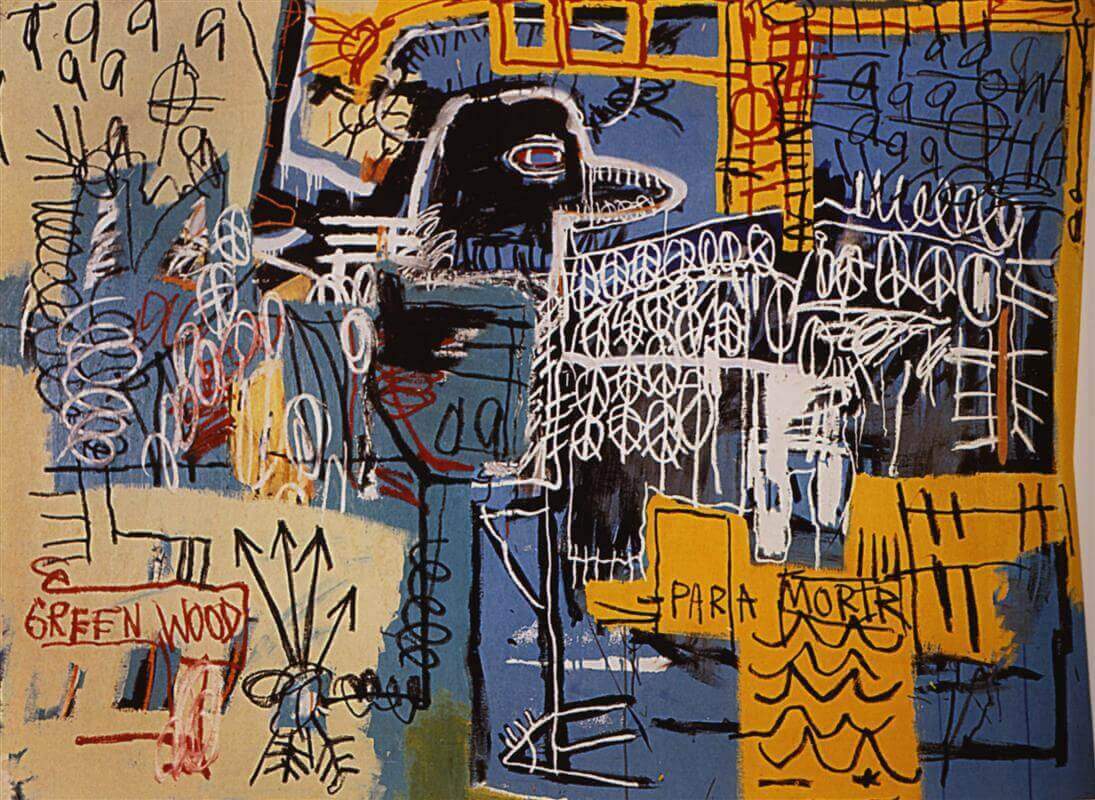
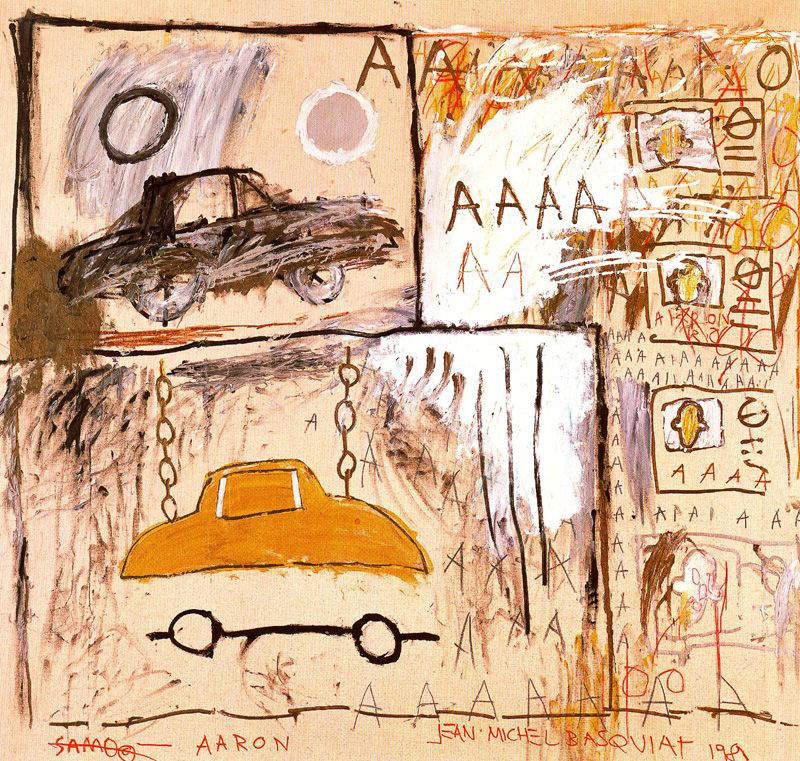

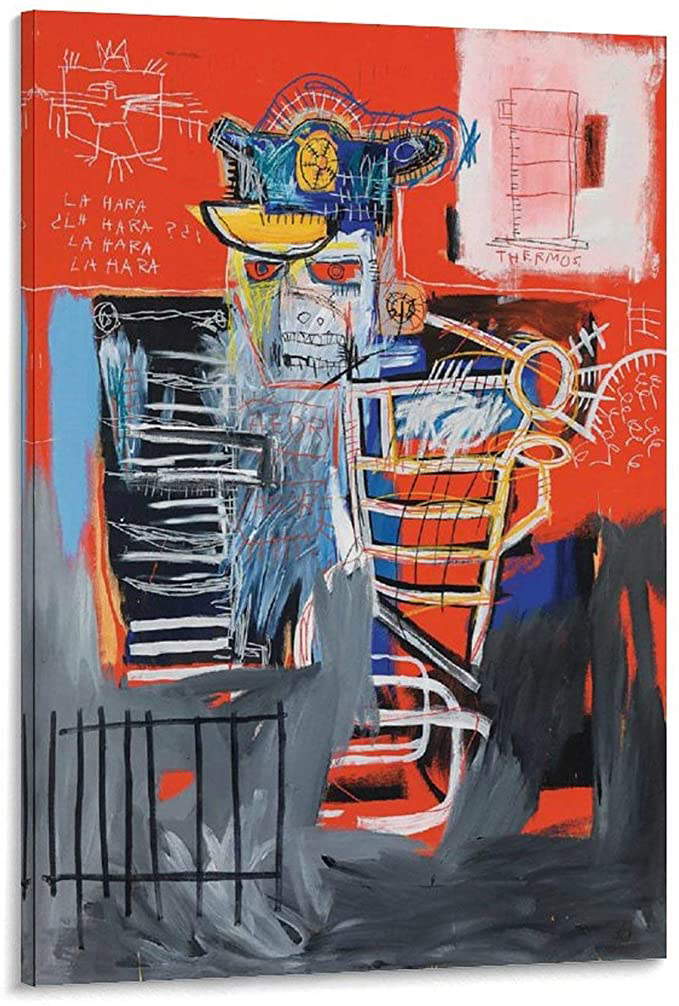
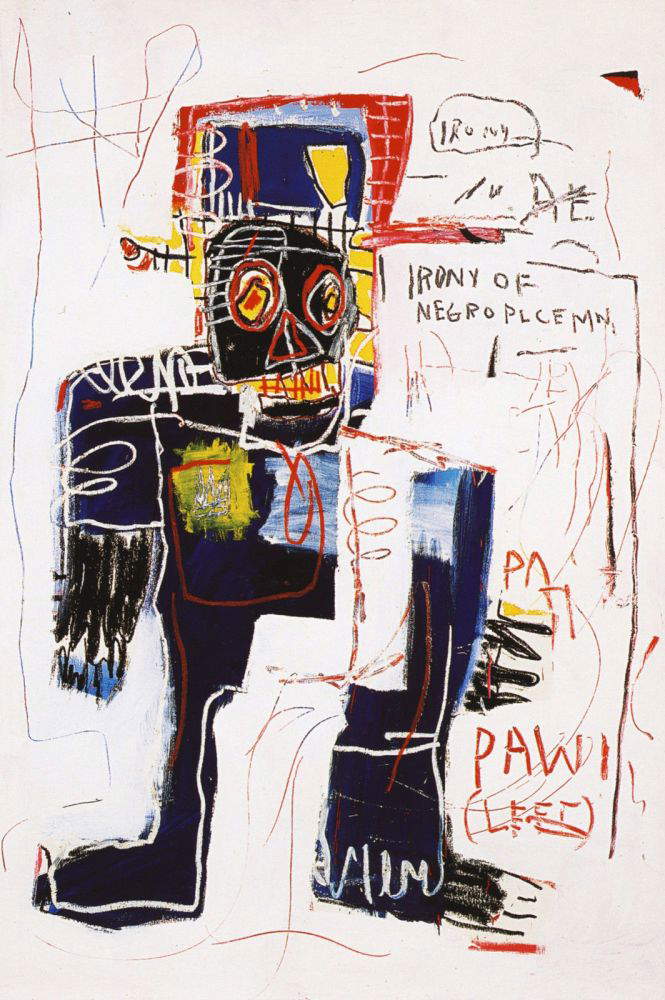
Basquiat is an artist fully immersed in his era, at the turn of the 1970s and 1980s. These were frenetic, innovative, colorful years, in which commercial advertising language, cosmopolitanism, technological innovations, media, and consumerism were spreading on a large scale, all cues that would be well present in his graffiti. Basquiat also lives in New York City, a dynamic city where art transcends museum rooms and literally takes to the streets: in fact, the artist approaches street art by admiring other writers’ murals on the streets of the “Big Apple.”
The graffiti signed with the name SAMO, dated between 1977 and 1980, are quite conceptual, presenting sentences that are sometimes shorter and more impactful, sometimes longer, but all of them present “statements” that invite the viewer to reflect on certain dynamics and hypocrisies of everyday life. Some examples: “SAMO© as the end of brain-washing religion, inconclusive politics and false philosophy,” “SAMO© as a release clause,” “SAMO© saves idiots,” “SAMO© as the end of vinyl punk,” “SAMO© as an alternative to making art with the radical-chic sect funded by daddy’s dollars,” “SAMO© as an expression of spiritual love,” “SAMO© for the so-called avant-garde.” The graphic style, when it comes only to lettering, is simple and minimal, alternating between black lettering on a white background and white lettering on a black background through the use of spray paint cans sprayed directly on the wall. Sometimes some symbols, such as a stylized crown, and pictograms of various kinds also appear.
In addition, in both the works signed SAMO© but especially in later works by Basquiat alone, colorful anthropomorphic figures often appear that are highly elaborate in composition through the use of sometimes round and curved, sometimes broken and rigid shapes. Basquiat’s interest in the depiction of the human figure and particularly body structure dates back to an incident when he was eight years old. He was in fact hit by a car while playing in the street and had his spleen removed; he was then hospitalized for a long time and his mother, to entertain him, brought him a copy of the Gray’s anatomy manual, which fascinated the little boy.
One could liken this particular rendering of the human form to the current of Expressionism; in fact, Basquiat’s anthropomorphic beings are yellow, black, red, and green, and the somatic features are reduced to unrealistic graphic marks, resembling sketches one makes hastily with pen and paper. Yet, they definitely come across as very expressive: some seem to shout, some seem to shriek, and others seem to move awkwardly in space, often filled with letters, graphic signs, and brightly colored backgrounds. See Dustheads (1982) for reference.
The colors, pure and squillant, are used by the artist in a very instinctive and spur-of-the-moment manner, squeezing tubes of paint directly onto the medium. Basquiat’s very way of painting does not suggest anything rational, but rather seems to be a visceral action dictated by an inner urgency. It is said, among other things, that Basquiat did not paint steadily, but alternated between periods of stalemate and periods of great productivity that caught him at the most disparate times, even in the middle of the night, as if he were in a trance.
Comparing Basquiat’s works, it is possible to notice some recurring elements used by the artist as a message of denunciation. Some policemen are present, symbolizing an excessive use of rigor and discipline, see for example La Hara and Irony of the Negro Policemen (1981), especially the second work. Basquiat wants to emphasize in this work the irony of a black man turned policeman, who thus moves from a historical situation of subjugation because of his ethnicity to one of command and power, finding himself towering over other weak people.
The theme of injustices towards African Americans is also suggested by the presence of physiognomic features reminiscent of African masks, a way for the artist to denounce the condition of slavery suffered by this people throughout history. Finally, we find present in several works Basquiat’s passion for jazz music, which he appreciated since he was a boy, especially in Bird on money (1981). This work in particular is a direct homage to saxophonist Charlie Parker: “bird” was in fact his nickname. A key piece in Basquiat’s production is surely his relationship with Andy Warhol, perhaps one of the few fixed points in Basquiat’s life. In addition to the great admiration the young writer had for his art, their friendship was very deep on both a human and an artistic level. They collaborated together on several projects, for example the 1986 series Collaborations, and they mounted an exhibition together, on the poster of which they both appear as two opponents in a boxing match.
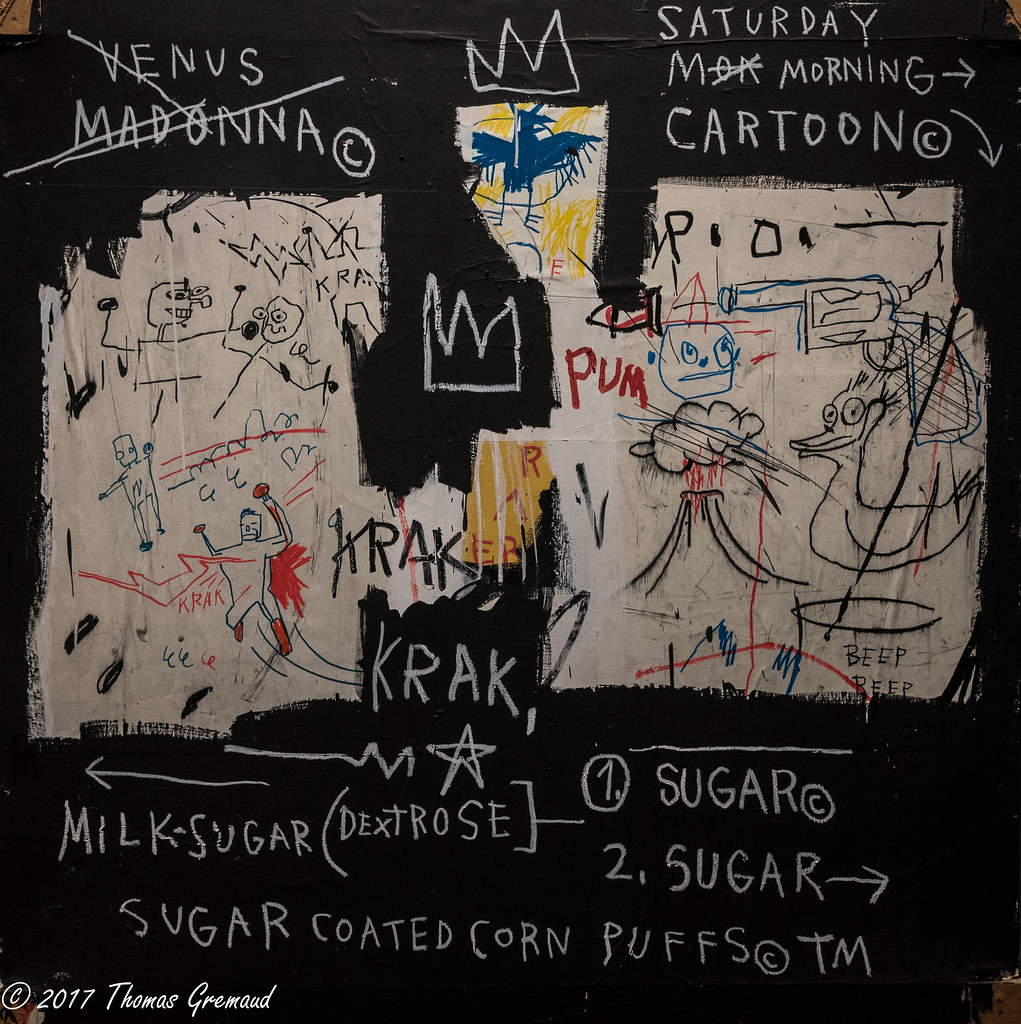
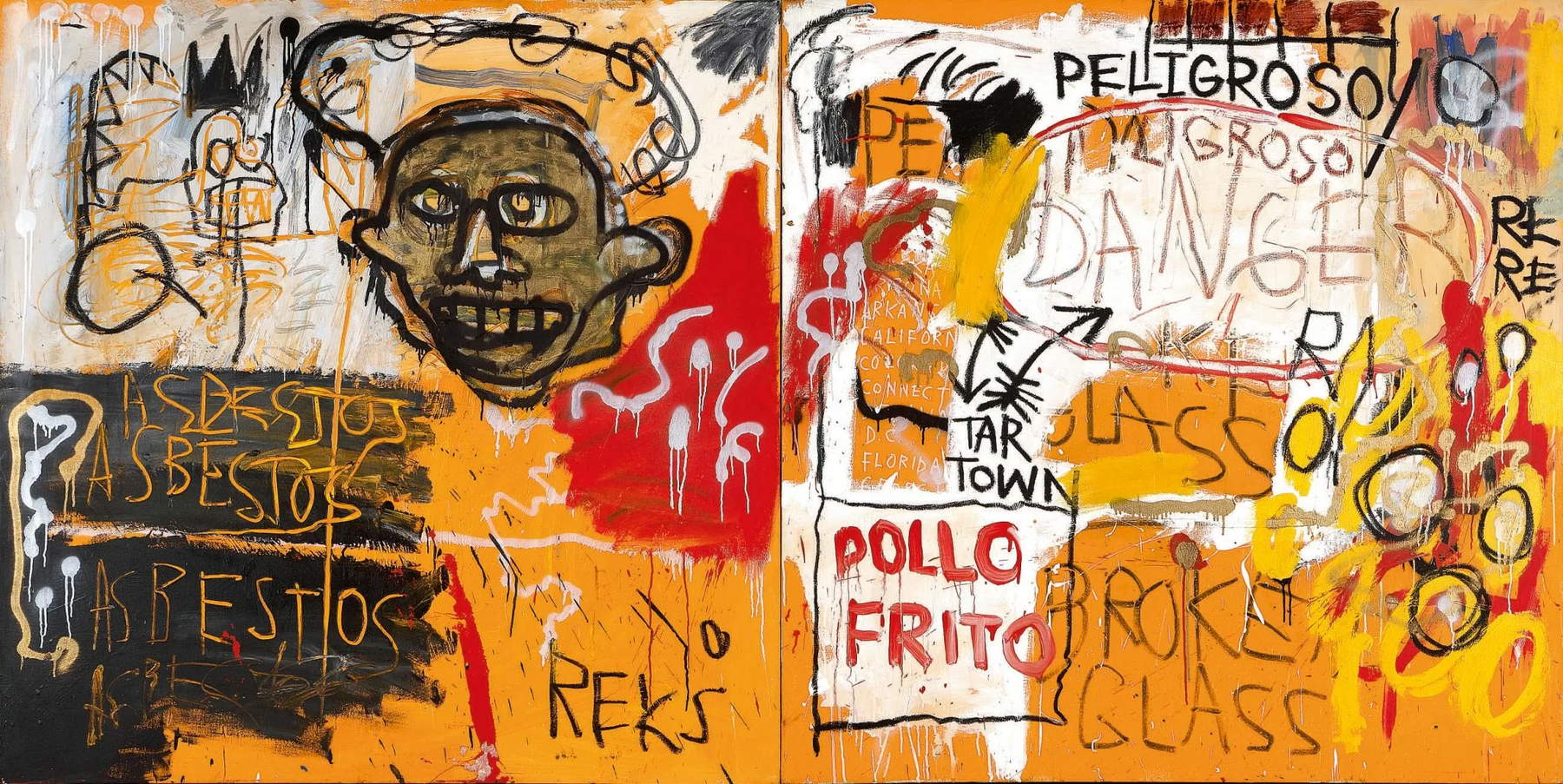
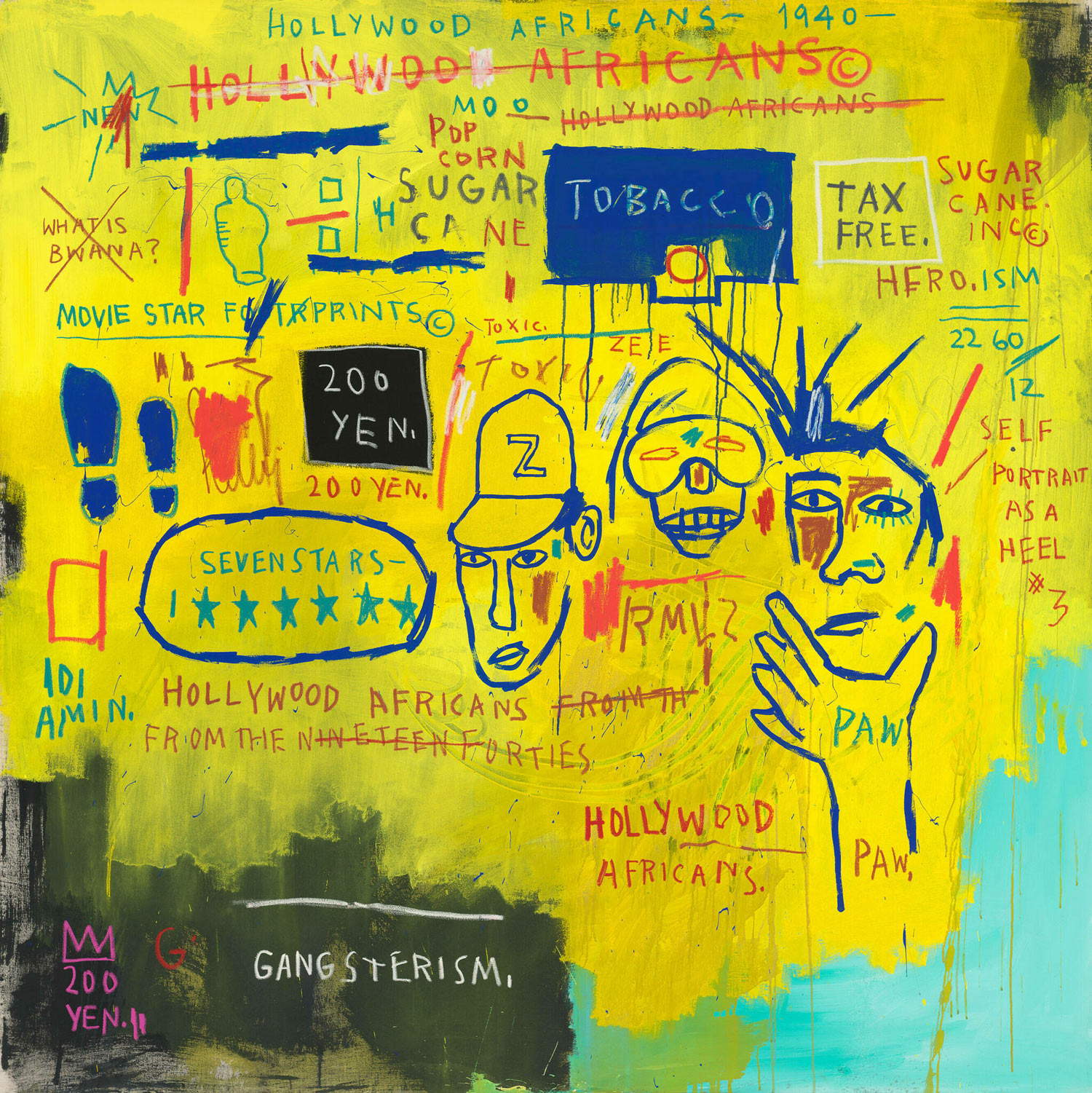
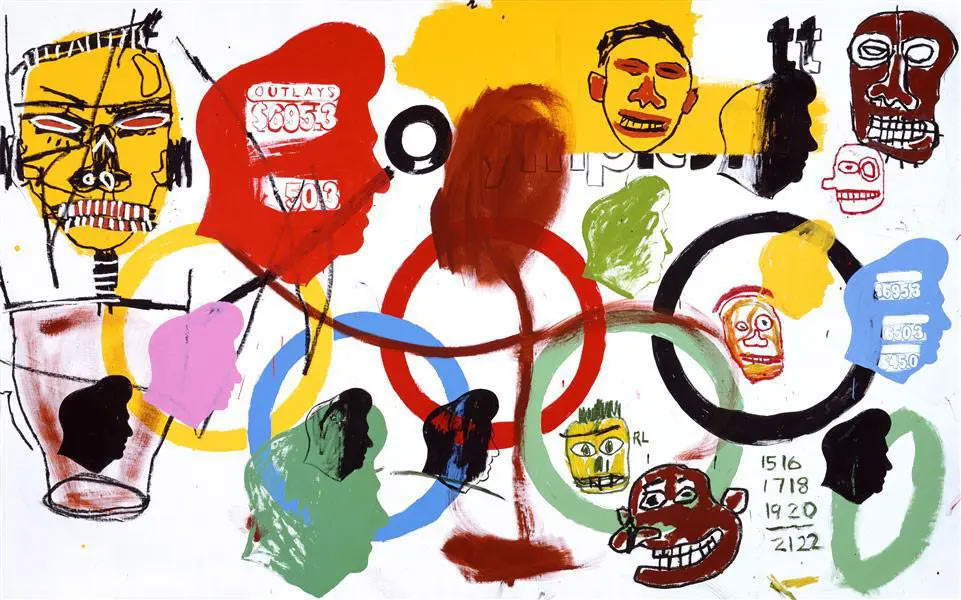
It is not uncommon to read news reports of a fortuitous find of a work by Jean-Michel Basquiat, even if simply browsing the stalls of flea markets. In fact, Basquiat in a sense traces the ephemeral consumerism of the 1980s, for which he produced many works that the wealthy or well-to-do of the time greedily purchased in art galleries. Most of Basquiat’s output is found within private collections, for example, some works are owned by an Isrealian entrepreneur, Josef Mugrabi, who had come into contact with his art through Andy Warhol. And probably many other works are found in homes that are not known about.
Basquiat’s output is precisely being delineated over the years thanks to these finds. In the United States it is possible to admire some paintings in museums, including several works such as Untitled (skull) (1981), Horn players (1983) at the Broad Museum in Los Angeles and the painting Sam F (1985) in the Dallas Museum of Modern Art. One work, A panel of experts (1982), is found, however, in Canada in the Montreal Museum of Fine Arts. Several exhibitions have been dedicated to the American artist in Italy, including a celebrated one at Mudec in Milan in 2017 and one in Rome in 2002. In our country, a publicly accessible Basquiat painting is preserved in Florence at the Casamonti Collection.
 |
| Jean-Michel Basquiat, life and works of the American artist |
Warning: the translation into English of the original Italian article was created using automatic tools. We undertake to review all articles, but we do not guarantee the total absence of inaccuracies in the translation due to the program. You can find the original by clicking on the ITA button. If you find any mistake,please contact us.